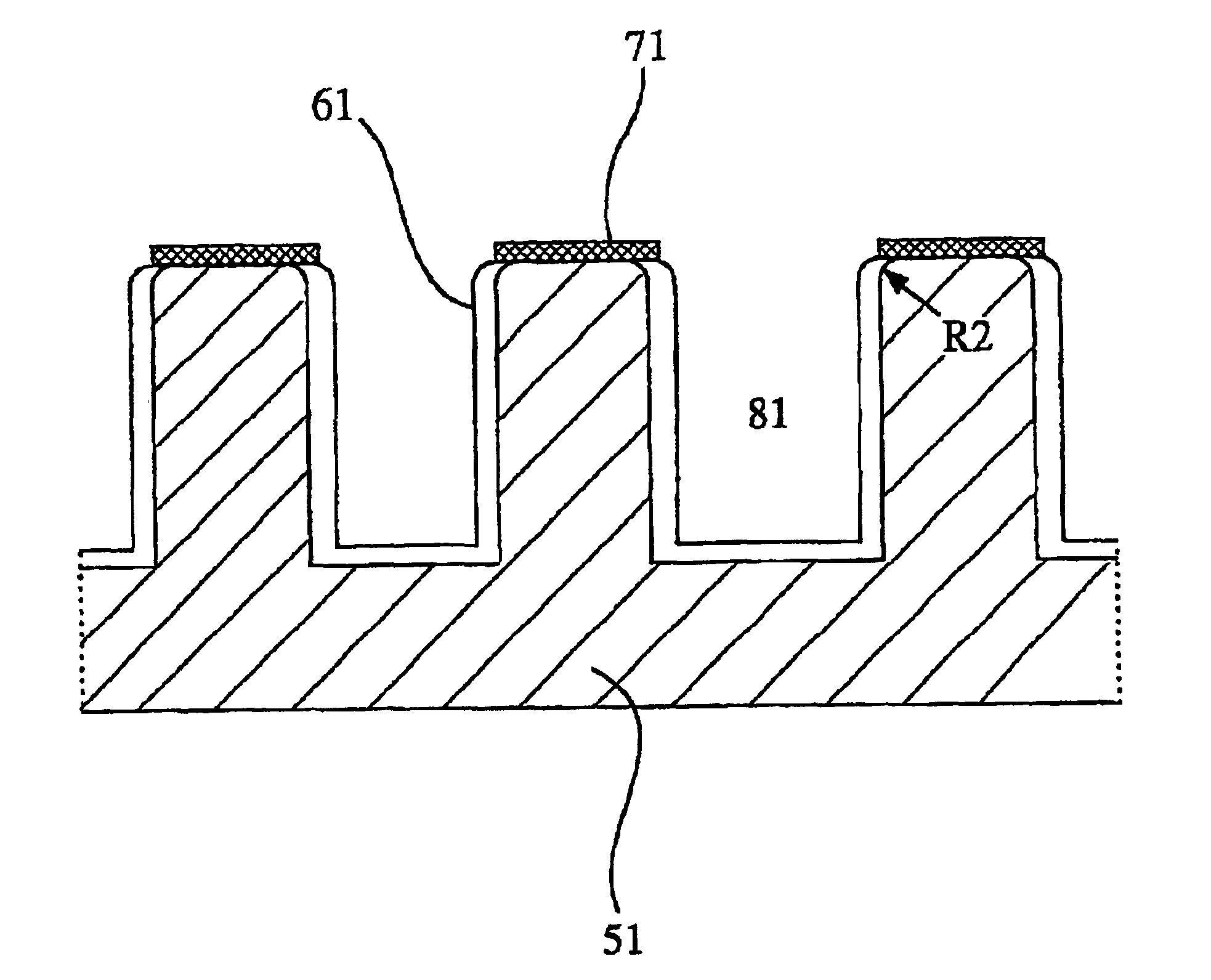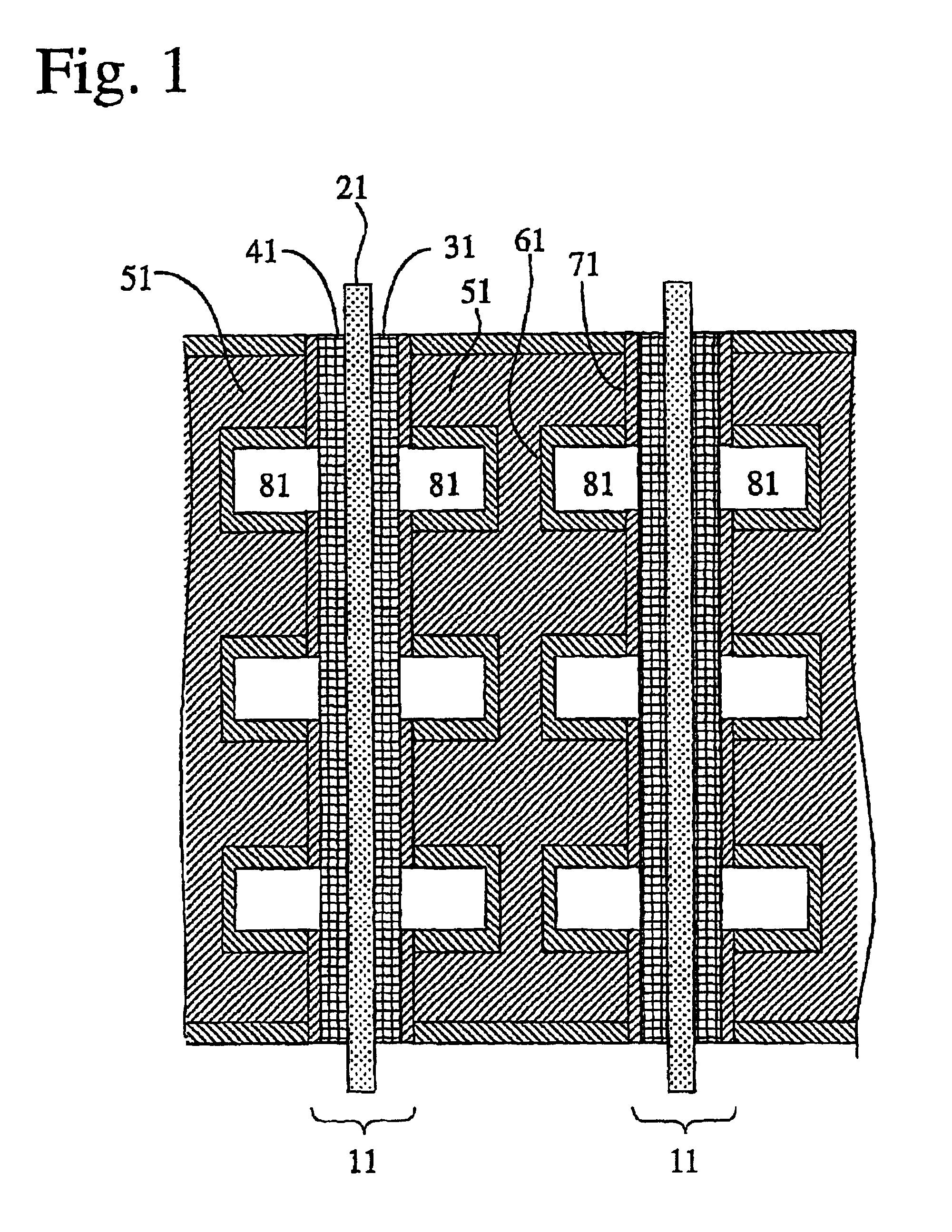Embossed current collector separator for electrochemical fuel cell
a fuel cell and collector separator technology, applied in the field of bipolar current collector separator for fuel cells, can solve the problems of poor mechanical strength and high machining cost, difficult to utilize the conventional graphite separators as separators for on-vehicle fuel cells, and low mechanical strength and machining cos
- Summary
- Abstract
- Description
- Claims
- Application Information
AI Technical Summary
Benefits of technology
Problems solved by technology
Method used
Image
Examples
example 1
An aluminum metal plate of 1 mm×150 mm×150 mm in size having a purity of 99.6% was press-worked to form flow channels having a depth of 1.0 mm and a width of 3.0 mm thereon, so that a separator base was prepared. This separator base was anodized in an oxalic acid aqueous solution, immersed in boiling water for 30 minutes, and dried to dispose an anodized aluminum layer having a thickness of 12 μm thereon. Then, electrode contact faces of the anodized separator base were lapped and washed, to improve the flatness thereof and remove the anodized aluminum layer thereon. Subsequently, each of the electrode contact faces was sputtered with Au at a separator base temperature of 200° C. under pure argon gas of 5 mTorr to dispose a conductive film having a thickness of approximately 1 μm, so that a separator was produced.
To 100 parts by weight of carbon black was added 15 parts by weight of a Pt paste (Pt-content: 90 weight %), and to this was further added 15 parts by weight of Teflon part...
example 2
Fuel cells 2a to 2s using the first separators of the present invention were produced in the same manner as the above-mentioned fuel cell 1a except for using materials shown in Table 2 instead of Au for the conductive film, respectively. Here, the conductive films of the fuel cells 2q and 2r were each disposed by sputtering carbon (fuel cell 2q) or conductive carbide SiC (fuel cell 2r) to the electrode contact faces under argon gas of 30 mTorr while using a target thereof.
To each of the fuel cells 2a to 2s using the first separators of the present invention and above-mentioned comparative fuel cell 1b was supplied a humidified, simulated fuel gas containing 70 volume % of H2, 20 volume % of CO2 and 10 volume % of H2O through the flow channels on the anode side, and supplied air as an oxidizing agent through the flow channels on the cathode side, so that each of the fuel cells 2a to 2s and 1b was evaluated with respect to the stability of electric generation. Material used for conduc...
example 3
Fuel cells 3a to 3j using the first separators of the present invention were produced in the same manner as the above-mentioned fuel cell 1a except that the porosity of the anodized aluminum layer was changed as shown in Table 3 by controlling conditions for disposing the anodized aluminum layer, respectively. Each of the fuel cells 3a to 3j was evaluated with respect to the stability of electric generation in the same manner as Example 2. Porosity of anodized aluminum layer, initial electric generation voltage, electric generation voltage after working for 10 days, and condition of separator after working for 10 days of each fuel cell were shown in Table 3.
TABLE 3ElectricConditiongenerationofPorosity ofInitialvoltage afterseparatoranodizedelectricworkingafterFuelaluminumgenerationfor 10 daysworkingcelllayer (%)voltage (V)(V)for 10 days3a0.860.810.83a*3b1.250.820.81a*3c1.630.860.84a*3d2.010.830.81a*3e2.670.790.75b*3f3.020.840.78b*3g3.540.850.75b*3h5.060.880.73b*3i7.320.810.63c*3j10....
PUM
| Property | Measurement | Unit |
|---|---|---|
| porosity | aaaaa | aaaaa |
| thickness | aaaaa | aaaaa |
| curvature radius | aaaaa | aaaaa |
Abstract
Description
Claims
Application Information
 Login to View More
Login to View More - R&D
- Intellectual Property
- Life Sciences
- Materials
- Tech Scout
- Unparalleled Data Quality
- Higher Quality Content
- 60% Fewer Hallucinations
Browse by: Latest US Patents, China's latest patents, Technical Efficacy Thesaurus, Application Domain, Technology Topic, Popular Technical Reports.
© 2025 PatSnap. All rights reserved.Legal|Privacy policy|Modern Slavery Act Transparency Statement|Sitemap|About US| Contact US: help@patsnap.com



